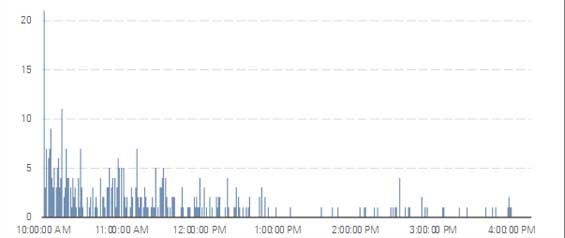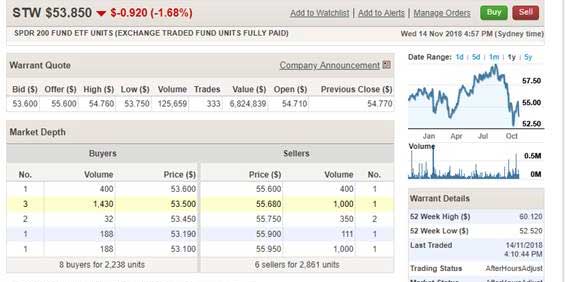Investing basics: Check this before investing in LICs and ETFs
Listed investments benefit from expert management and diversification, while also being transparent, accessible and – on the whole – cheap. But they have some drawbacks.
There are a lot of reasons to like listed managed investment structures such as ETFs, ETMFs, active ETFs and LICs. Listed investments benefit from expert management and diversification, while also being transparent, accessible and – on the whole – cheap.
But there are drawbacks. Listed managed structures can be plagued by misleading indicative net asset values (iNAVs), spread instability, and – thanks to that ease of access – have the potential to encourage losses through short term trading.
LICs have also been known to trade at a meaningful premium or discounts to their net asset value, making it difficult to work out if you’re getting a good deal for what you are paying.
That's why Morningstar analysts can have a lower rating for listed structures where there is both an investment trust and a listed vehicle for the same strategy.
While as investors we often focus on the management fees of any investment, Morningstar senior manager research analyst Matt Wilkinson says when it comes to listed structures the spread between the buying and selling price is also important.
What are buy/sell spreads?
A spread is the gap between bid and ask prices of a stock or other security. The bid is the price that someone is willing to pay for a security at a specific point in time, whereas the ask is the price at which someone is willing to sell. The difference between the two prices is called the bid-ask spread.
The market depth lists all the buy and sell orders in the market for a particular listed security.
Why are spreads an issue for listed investment structures?
Speaking at the Morningstar Individual Investor Conference in Sydney last month, Wilkinson used a series of charts to demonstrate why wide spreads can be an issue for investor.
This is a chart of an ETF, where the daily closing price is plotted.

Source: Investing.com
This a candle stick chart of exactly the same ETF over the same timeframe and it shows the open price, high, low, close price.

Source: Investing.com
It shows an enormous daily range on some days. The people selling at the bottom or buying at the top of these peaks and troughs are getting terrible prices.
So why is this happening?
Wilkinson says the answer lies in the structure of listed managed investment products and how they trade on the market.
If you're trading highly liquid securities, the bid-ask spread will tend to be pretty inconsequential, meaning that buyers and sellers generally agree about what the right price for a security should be.
But bid-ask spreads can be more onerous when you're dealing in more thinly traded securities, such as ETFs with light trading volume.
Wilkinson says this is because the bid-ask spread compensates the market maker in the security – the market middleman from whom you buy, or to whom you sell, the shares in the company.
"The aggregate of all market participants will widen or narrow the spread depending on supply and demand ultimately," he said
"This is our issue with some listed products which means few achieve a Morningstar Gold rating, particularly those where the market makers are the main market participant – and that's particularly in newer products.
"Market makers have greater knowledge than other participants."
What types of products are most vulnerable?
While Wilkinson says the impact will be felt primarily by smaller and newer listed product, even large and very liquid listed products can be affected.
For example, on 9 November 2016, the day of the US Presidential election, the ASX experience an enormously volatile trading day. At the start of the day, the spread on the iShares Core S&P/ASX200 ETF was minimal, but when the results came through, the spread blew right out.
iShares Core S&P/ASX200 ETF IOZ Bid-Ask Spread, 9 Nov 2016

Source: Morningstar Real-Time Data
So how can you reduce the drag on your returns?
At the risk of stating the obvious, reducing your number of transactions is a good starting point, particularly if you're dealing in any type of illiquid security.
Another way to exert more control is to use a limit order rather than a market order. By doing so, you're saying that you're not going to accept any old price when buying and selling; you only want to transact if you can get a specific price or better.
Wilkinson has another idea. He says a study of spreads over the course of a trading days shows there is a clear concentration of price spiking due to wider spread in the morning.
There are two main reasons why:
It’s the time of the day when market makers are initiating their systems. The less liquid products particularly are more prone;
And when most overseas markets are closed making pricing of global ETPs much more difficult. And as Asian markets open, this brings an increase level of uncertainty and volatility to local prices for a time.
But by the afternoon, it all settles down.
This is typical of any trading day:

Source: Morningstar Real-Time Data
His message? Be more careful when trading at the beginning of the day and during times of volatility. Lastly, Wilkson encourages investors to check the market depth and the spread before trading ETFs, ETMFs and LICs. You can do this via your online broker.

Source: Westpac Online Investing
More in this series
• Investing basics: the art and science of valuing stocks – pt.1
• Investing basics: the art and science of valuing stocks – pt.2
• Investing Basics: How to build and invest your emergency fund
Emma Rapaport is a reporter for Morningstar Australia.
Make better investment decisions with Morningstar Premium | Free 4-week trial
© 2018 Morningstar, Inc. All rights reserved. Neither Morningstar, its affiliates, nor the content providers guarantee the data or content contained herein to be accurate, complete or timely nor will they have any liability for its use or distribution. This information is to be used for personal, non-commercial purposes only. No reproduction is permitted without the prior written consent of Morningstar. Any general advice or 'class service' have been prepared by Morningstar Australasia Pty Ltd (ABN: 95 090 665 544, AFSL: 240892), or its Authorised Representatives, and/or Morningstar Research Ltd, subsidiaries of Morningstar, Inc, without reference to your objectives, financial situation or needs. Please refer to our Financial Services Guide (FSG) for more information at www.morningstar.com.au/s/fsg.pdf. Our publications, ratings and products should be viewed as an additional investment resource, not as your sole source of information. Past performance does not necessarily indicate a financial product's future performance. To obtain advice tailored to your situation, contact a licensed financial adviser. Some material is copyright and published under licence from ASX Operations Pty Ltd ACN 004 523 782 ("ASXO"). The article is current as at date of publication.

